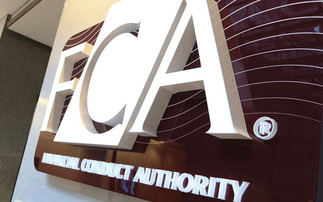Solvency II will have far reaching implications for all types of insurers. Courtney Marsh discusses the reforms and what advisers can expect.
You may ask the question whether insurance products are in their nature designed to meet consumer needs. But demonstrating good conduct means that insurers need to be able to justify why new products are being brought to the market and why changes are being made to existing products.
In simple terms, changes should be made with the consumer in mind and not simply linked with company financials.
In addition, much of the reasoning behind harmonising regulation through Solvency II is to promote confidence in the financial stability of the insurance sector and provide supervisors with an early warning so that any intervention can be promptly taken if a company's capital falls below the required level.
A company that is Solvency II-compliant will have put in place a robust framework that analyses their risks and will have increased their in-house expertise of risk analysis to help them to do so.
It also offers greater protection to consumers and should reduce any risk of an insurer not being able to meet its customer's claims.
A company that is Solvency II-compliant will have put in place a robust framework that analyses their risks and will have increased their in-house expertise of risk analysis to help them to do so.
Solvency II has created major changes in the sector. At Health Shield, we very much welcome it and believe it will be a force for good in the insurance industry.
It forces insurers to embed actuarial expertise, long-term planning and greater transparency into their financial planning process and product design.
Companies will have to explain clearly where they are holding their capital, why they have made the decisions they have, and the associated risks that sit behind those decisions.
For example, if a firm's board increased the risk exposure in its investment strategy, it would need to justify the reasons, explain the additional capital requirements to stakeholders, and perform thorough sensitivity and scenario testing to ensure the risk taken is not beyond the insurer's risk appetite.
Expected M&A activity
One expected consequence of the Solvency II rules is that there could be a surge of merger and acquisition activity in the insurance market.
Some larger insurers are expected to look to diversify their offerings to customers, while smaller companies may be less able to withstand the volume of analysis and reporting required under the new rules.
Combined, this makes way for many companies to seek to merge their services. The fact that all insurers across the EU have to report their capital position in the same way will only help the process.
We produced our first ORSA in November 2014, after planning for Solvency II for a long time. For years we have invested heavily in product development, risk management and actuarial capabilities.
All business and capital management planning has used five year Solvency II projections since 2012, combined with a wide variety of stress and scenario testing to enable us to see what might happen in very different or turbulent times.
It is only right from a customer perspective that financial firms have to submit themselves to this type of rigorous testing.
The issue of trust
People must be able to feel assured that the companies they buy products from are strong enough to deliver on their promises, that the company will still be around when they need it, and that the products they buy are properly designed to fit their needs.
Alongside Solvency II requirements, initiatives such as publishing claims stats can help greatly with consumer confidence if communicated well.
Our last set of figures showed that we paid 97.4% of all claims, which continues to prove that people can put trust in the services they bought into when initially taking out a product.
Rather than seeing Solvency II as a directive handed down from the EU that causes great disruption and cost to the market, we should see it as an opportunity to prove to consumers the strength of our industry and the invaluable services we provide to people every day.
Courtney Marsh is Executive Director of Operations and Risk at Health Shield.












